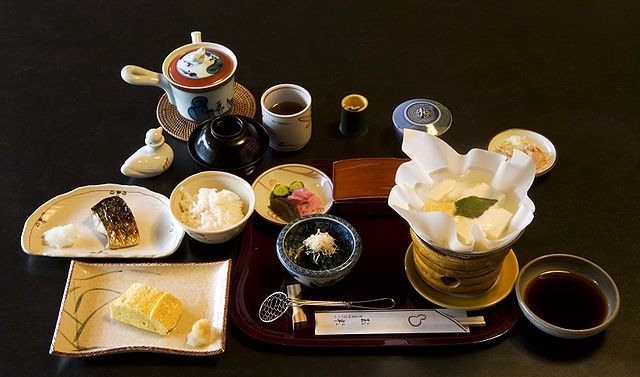Japanese cuisine as a whole has just been assigned as a UNESCO “Intangible Cultural Heritage“. The definition of such is as follows (see the wikipedia article):
Intangible Cultural Heritage means the practices, representations, expressions, knowledge, skills – as well as the instruments, objects, artifacts and cultural spaces associated therewith – that communities, groups and, in some cases, individuals recognize as part of their cultural heritage. This intangible cultural heritage, transmitted from generation to generation, is constantly recreated by communities and groups in response to their environment, their interaction with nature and their history, and provides them with a sense of identity and continuity, thus promoting respect for cultural diversity and human creativity.
 Japan was the first country in the 1950s to protect cultural heritages like this by law, and it is among the countries that has the most intangible cultural heritage items on the UNESCO list, for example Noh theatre and gagaku court music, of which I have written before. Theatre, music, and handicraft are common cultural heritage, but Japanese cuisine is only the fifth one to be included, the others are French, Mediterranean, Turkish, and Mexican cuisine.
Japan was the first country in the 1950s to protect cultural heritages like this by law, and it is among the countries that has the most intangible cultural heritage items on the UNESCO list, for example Noh theatre and gagaku court music, of which I have written before. Theatre, music, and handicraft are common cultural heritage, but Japanese cuisine is only the fifth one to be included, the others are French, Mediterranean, Turkish, and Mexican cuisine.
It surprises me a little that the whole of Japanese cuisine is designated as intangible cultural heritage, from Kyoto’s palace-derived haute cuisine kaiseki (see the breakfast above for an idea) to Portuguese-introduced or invented (?) tempura; from the quickly prepared ramen and udon noodles to the painstakingly slow process of making the various types of yuba; from raw sushi and sashimi to deliciously cooked unagi; and I am sure it even includes natto, the harmless English translation “fermented soybeans” not quite capturing the atrocity of its taste…
Over time I will have lots of occasion to eat and try much of Japan’s culinary art, maybe even learn how to prepare one or two of those dishes. I shall report accordingly, promised!
